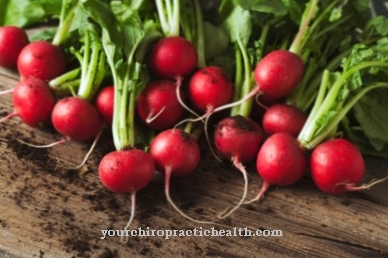In our parlance it is called alcohol mostly meant ethanol. This alcohol is produced by the natural fermentation of the sugar. In 1857 Luis Pasteur discovered that it was a metabolic product of microorganisms. Alcohol is a colorless, burning-tasting liquid that is lighter than water and evaporates at around 78 degrees Celsius. The alcohol is highly flammable and burns with a blue flame. Liquids in nature have a maximum alcohol content of 15 percent, in higher concentrations alcohol is a preservative poison. Since the 20th century, alcohol has also been produced synthetically for technical purposes.
Effects of alcohol on humans

Alcohol has an intoxicating effect when consumed by humans. It is absorbed by the mucous membranes of the mouth, stomach and small intestine and is distributed throughout the body.
Alcohol has an intoxicating effect when consumed by humans. It is absorbed by the mucous membranes of the mouth, stomach and small intestine and is distributed throughout the body.
The nervous system and liver are particularly sensitive to alcohol. Every little intoxication destroys nerve cells and strains the liver. Alcohol acts like a sedative on the central nervous system.
Ethanol is stored in the cell membranes of the nerve cells, which restricts the transmission of stimuli in the nervous system. The mood eases and fears or worries subside.
In small quantities, the alcohol has a stimulating effect; if the alcohol content in the blood increases, the central nervous system is dampened. The ability to react and to make judgments decline. This can lead to impaired consciousness.
In the body, alcohol is treated as a poison and primarily broken down. Thus, the fat metabolism slows down. The fat is consumed less and stored in adipose tissue. Up to 90 percent of the amount of alcohol consumed is broken down by oxidation in the liver.
Alcohol in medicine as a drug
Alcohol has proven to be an extremely effective antiseptic and disinfectant. If an alcohol-water mixture contains 50 to 80 percent alcohol, it kills all bacteria and, to a limited extent, viruses. Alcohol is an important organic solvent and carrier substance for the ingredients in the manufacture of drugs from herbal active ingredients that are not soluble in water.
Its preservative effect is also useful in the manufacture of medicines. Used as a rub, alcohol increases blood flow to the skin. Since alcohol evaporates quickly, an alcohol solution is also used externally as a means of pain relief and cooling, particularly effective for insect bites. A healing effect of alcohol as a drink has not been proven.
Dangers & addictions of excessive alcohol consumption
Alcohol is a drug and, if consumed in excess, can lead to life-threatening alcohol intoxication. Constant consumption of alcohol over a long period of time causes irreparable damage to the body and soul. There is a high risk of physical and physical dependence.
Overworking the liver while breaking down the alcohol will permanently impair it. From fatty liver to liver inflammation to cirrhosis of the liver, the efficiency of the liver for detoxifying the body decreases continuously.
Secondary diseases set in and the quality of life is significantly reduced.High blood pressure and impairment of the cardiovascular system are also among the negative effects, as are depression and infertility.
It is not uncommon for serious illnesses to have a fatal outcome due to excessive alcohol consumption.
A new study by the German Institute for Nutrition Research Potsdam-Rehbrücke shows in 364,000 people across Europe that around ten percent of cancer cases in men and around three percent of cancer cases in women are due to increased alcohol consumption. Many diseases can be avoided by not drinking alcohol.












.jpg)



.jpg)










.jpg)
